Anemic conditions in women are observed more often than in men and are characterized by faster clinical development. An understanding that the causes and consequences of low hemoglobin are interrelated, and often lie in reducing the biological potential of the female body, will help to avoid dangerous deviations.
Material Content:
Causes of low hemoglobin in women
Hemoglobin are called plasma protein molecules of the blood plasma, which in combination with red blood cells provide the transfer and supply of oxygen to cells.
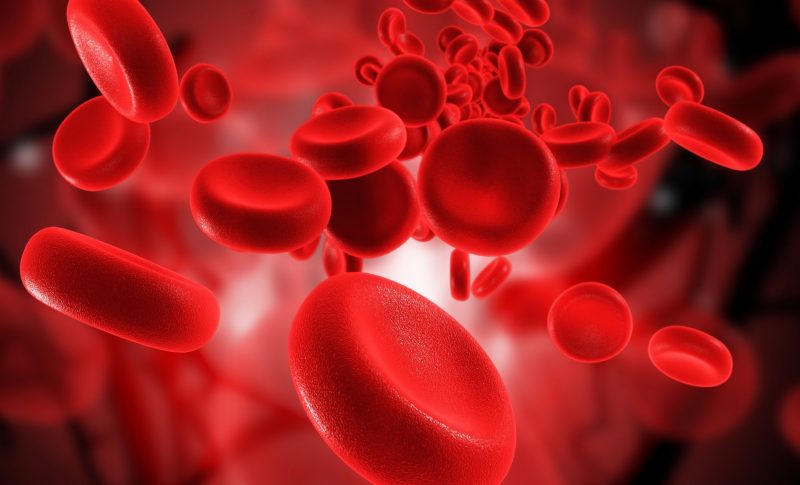
The iron atom in the hemoglobin molecule has the ability to bind simultaneously four oxygen molecules, which supports not only the proper nutrition of tissues, but also the processes of reverse transport of carbon dioxide.
The red color of blood is the result of plasma pigmentation with hemoglobin.
A decrease in hemoglobin level is regarded by doctors as a state of oxygen deficiency. Such a pathology can occur as a result of a decrease in the volume of iron-containing cells in the blood (anemia), or as a result of hemoglobin dysfunction associated with a loss in the ability to bind oxygen.
Among the main causes of low hemoglobin in women:
- various types of anemia - iron deficiency, which occurs with hematopoietic pathologies and gastrointestinal tract dysfunctions, and post-hemorrhagic, associated with blood loss during menstruation, childbirth or surgery;
- lack of nutrients in the body due to malnutrition or diets;
- bone marrow disease;
- hypothyroidism.The thyroid hormone produced by the thyroid gland is responsible for the function of iron absorption in the digestive tract. Lack of thyroxine production leads to a lack of iron in the blood;
- autoimmune diseases contribute to the death of red blood cells;
- infectious lesions - hepatitis, tuberculosis;
- renal failure;
- diseases of the digestive tract - gastritis, ulcers, enteritis, dysbiosis;
- the effects of chemotherapy;
- helminthic infestations cause a lack of B vitamins necessary for the production of red blood cells;
- a sedentary lifestyle reduces the intensity of blood flow, causing a shortage of red blood cells, since the brain does not receive signals about the need for their production;
- donation.
Besides, in a woman’s life there are many factors that provoke the development of anemic conditions - a periodic change in physiological parameters causes menstruation, pregnancy, menopause.
What is the danger of low hemoglobin: consequences
The main function of hemoglobin is to supply the body cells with oxygen. When the level of iron-containing proteins in the blood decreases, a persistent lack of oxygen gradually forms in the tissues.
Against the background of oxygen starvation, a decrease in the efficiency of cells occurs, the general well-being of a woman worsens, weakness, fatigue appears, and brain activity is disturbed.
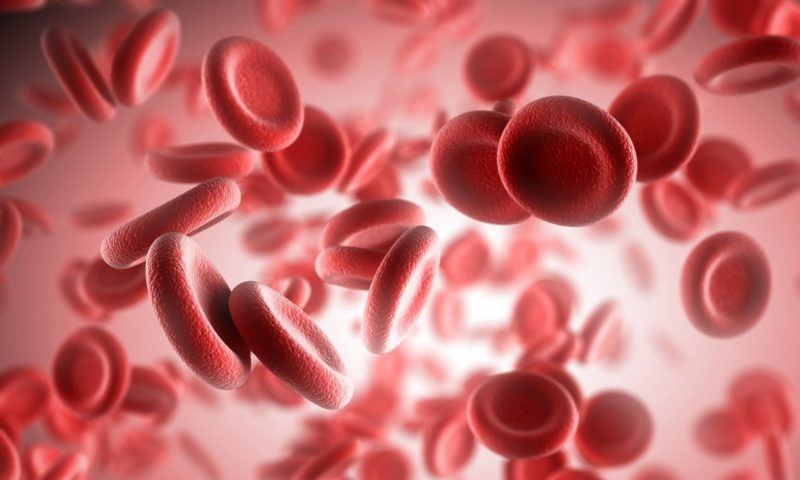
Depending on the duration and severity of anemic processes, pathologies of internal organs may develop:
- hypoxia is one of the most dangerous consequences of anemia. Causes dysfunctions of the central nervous system, heart muscle, kidneys and liver;
- to compensate for the lack of oxygen, the intensity of the heart increases, heart failure develops;
- the resistance of the immune system decreases, there is a risk of developing infections;
- inflammatory diseases of the musculoskeletal system - neuralgia, osteochondrosis, hernia, arthritis;
- erosive and ulcerative lesions of the gastrointestinal tract;
- in pregnant women - the threat of premature birth.
In women after 50 years, a prolonged anemic condition leads to the death of nerve cells in the brain and the development of dementia.
The norm in the blood of women by age
Doctors recognize hemoglobin indicators from the results of a general blood test. For an adult woman, a value in the range from 120 to 140 g / l is considered normal. However, some deviations can also be regarded as the norm in athletes, pregnant women, as well as women who smoke.
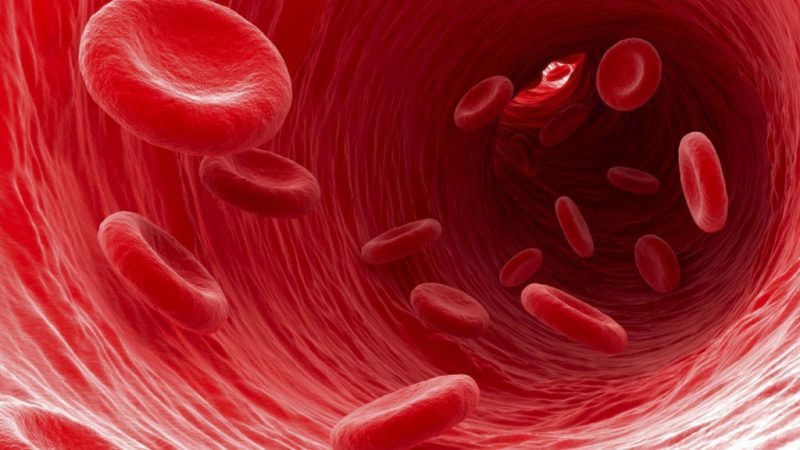
How the norm of hemoglobin indicators changes is seen from the table:
| Group, age | Hemoglobin level in g / l |
|---|---|
| 15-18 | 115-153 |
| 18-65 | 120-155 |
| More than 65 | 120-157 |
| Athletes | Up to 160 |
| Smokers | Up to 150 |
| Pregnant, first and third trimester | 110 |
| Pregnant Second Trimester | 105 |
With age, there are more prerequisites for reducing hemoglobin in the blood of women.
After 40 years, a deviation from the norm is facilitated by hormonal changes in the body and the transition to menopause. And after 50 years, the most likely reason for the decrease in hemoglobin is considered a deficiency of vitamins of group B and folic acid.
Symptoms and signs of low levels
Lack of oxygen affects the work of all body systems and quickly manifests itself in the form of signs that worsen the general well-being and reduce the working capacity of a woman.

The main symptoms of low hemoglobin:
- weakness;
- drowsiness;
- Dizziness
- low pressure;
- dyspnea;
- cold in the limbs;
- cramps
- fainting
- pallor or yellowness of the skin;
- fragility, dryness and hair loss;
- fragility of nails;
- tachycardia;
- enlarged spleen;
- discoloration of the stool;
- chest pain;
- cracks in the corners of the mouth.
There are frequent cases where anemic conditions caused a distortion of taste and smell - the patients had a desire to eat something inedible or they were attracted to the smell of naphthalene, exhaust gases.
The listed symptoms are characteristic of many diseases, so do not rush to conclusions. The best way to know your hemoglobin level is to have a complete blood count.
How to raise hemoglobin at home?
Treatment of severe forms of anemic conditions requires inpatient exposure. To increase hemoglobin with a mild form of the disease, it is enough to adjust the diet and lifestyle. In addition, to improve well-being it will be useful to use recipes of traditional healers, biologically active food additives and vitamin complexes.
Iron medications
Usually, with anemia, doctors prescribe replacement therapy - iron preparations, since this is a reliable way to restore lost hemoglobin counts. However, the help of any medicine is effective only when the root cause of the disease is eliminated.

Among the most effective drugs for correcting hemoglobin levels are:
- Ferlatum - oral solution. Active active substance - iron protein succinylate;
- Maltofer - chewable tablets, drops, syrup based on iron polymaltosate hydroxide. The content of one tablet is equivalent to 100 mg of iron;
- Heferol - capsules based on iron fumarate. The content of one capsule is equivalent to 115 mg of elemental iron.
Acceptance of any iron-containing drugs is possible only after the appointment of a doctor and under his control. Besides, simultaneous intake of iron-containing drugs and tetracycline antibiotics, antacids or calcium preparations is unacceptable, since these drugs affect the absorption of iron.
Vitamins and Supplements
Dietary supplements are a good way to improve your health without resorting to drug therapy. With the development of anemic syndromes, dietary supplements can really improve well-being, and eliminate the symptoms of anemia. But the effect achieved will be temporary if the root cause of the pathology is not treated.
Iron Chelate - a dietary supplement with an active biological effect based on the properties of rose hips, thyme, sorrel, mullein, vitamin C, as well as calcium and phosphorus. The product is available in capsules, each of which contains 25 mg of iron gluconate.
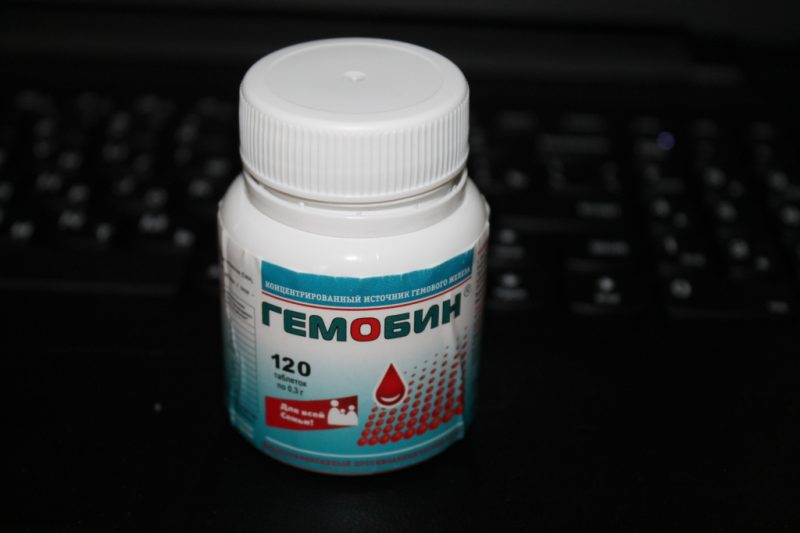
Hemobin - a source of heme iron based on iron sulfate, pantohematogen from the blood of Altai maral and ascorbic acid. It has no contraindications.
Ferrohematogen-Pharmstandard - Hematogen rich in easily digestible heme iron. Contains iron sulfates, folic acid, vitamin C, vitamin B6, copper sulfate. It is not recommended for patients with diabetes.
Along with taking active supplements, it is appropriate to use vitamin complexes - Biovital, Vitrum, Duovit.
Hemoglobin Enhancing Products
Enrichment of the diet is a significant factor in influencing the composition of the blood.
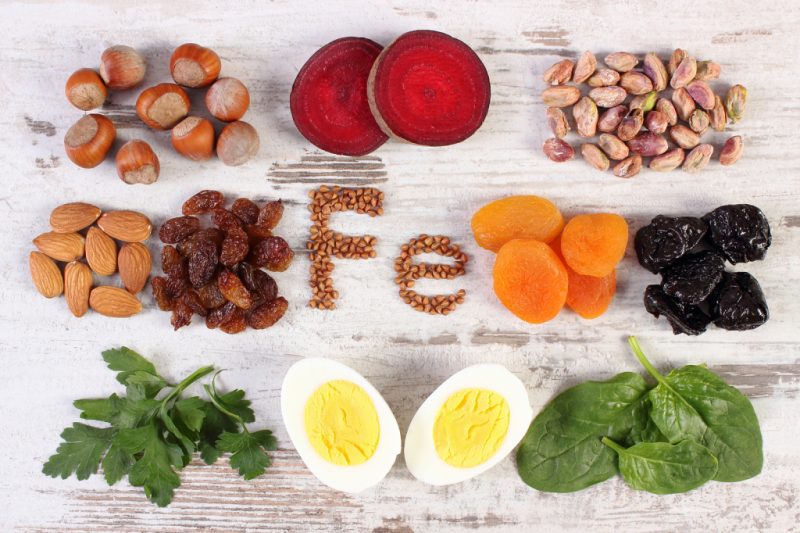
To increase hemoglobin, you must enter the following products in the daily menu:
- meat and offal - beef, veal, lamb;
- dried fruits - raisins, prunes, dried apricots, figs, dates;
- juices - pomegranate, apple, beet, carrot;
- dishes based on legumes - soybeans, beans, lentils, beans, peas;
- egg yolks;
- buckwheat, millet and oats dishes;
- vegetables - tomatoes, spinach, carrots, pumpkin, beets, sorrel;
- fruits - apricots, peaches, apples, pears, plums;
- berries - blackcurrant, strawberries, raspberries;
- seafood, caviar;
- seeds, nuts.
As well as chocolate, honey, mushrooms. Of the drinks, along with juices, fruit drinks and compotes are preferred.
Some of the products may reduce iron absorption. therefore treatment with iron preparations is not recommended to be combined with the use of milk, confectionery and bakery products, dishes based on rice or eggs, as well as vegetables containing oxalic acid - rhubarb, spinach, cabbage, sorrel, asparagus.
Folk remedies
To normalize the level of hemoglobin, traditional medicine recommends juice mixes of carrots, beets, apples and cranberries, taken in equal proportions, as well as decoctions based on rose hips with honey - a spoonful of powdered dried fruits per cup of boiling water, honey to taste.
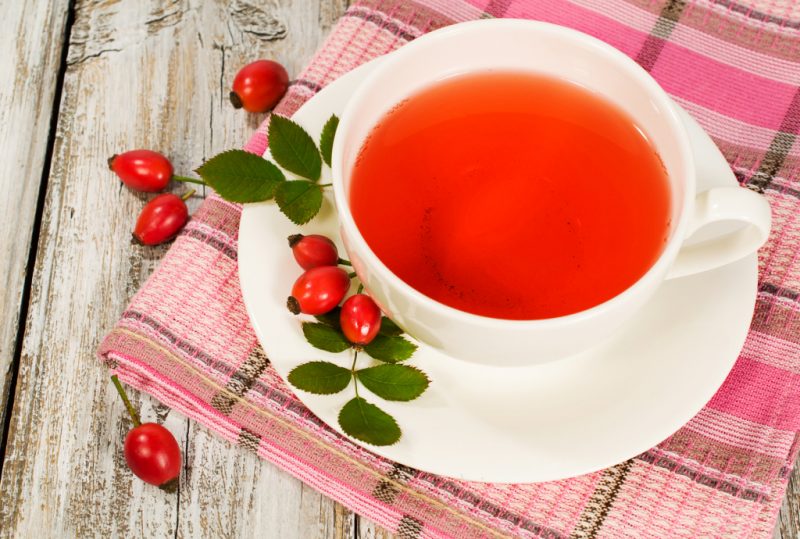
Before embarking on an independent increase in hemoglobin, it is necessary to consult a doctor. The fact is that the constant use of iron-containing products can have the opposite effect and lead to an excess of iron in the body - a condition that is serious and dangerous to health.
How to increase during pregnancy?
Despite the fact that low hemoglobin during pregnancy is a fairly common phenomenon, its effects should not be underestimated. Oxygen starvation is extremely harmful to the pregnant woman and can cause a miscarriage or a delay in fetal development.
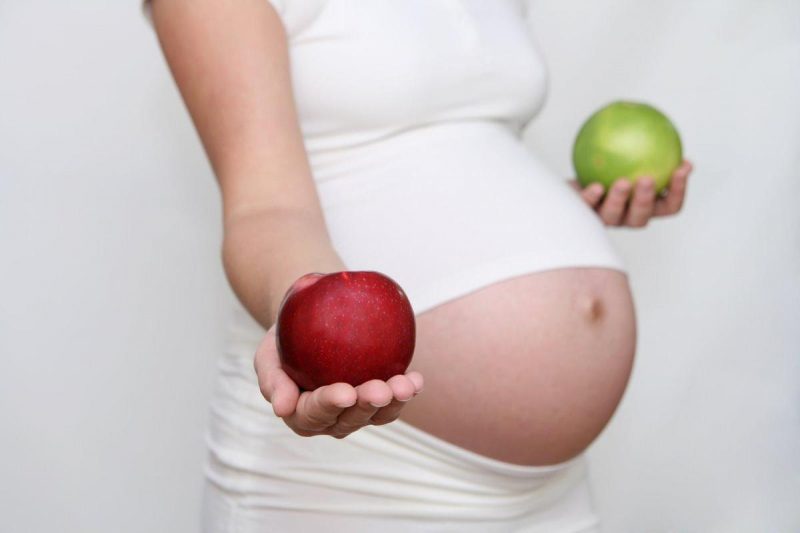
Therefore, controlling the level of hemoglobin in the blood of a woman is one of the priority tasks of doctors in the management of pregnancy.
A fall in hemoglobin during pregnancy is considered a level of 100 g / l or lower. Decrease in indicators to 70 g / l is regarded as a sign of a severe form of anemia, requiring the use of radical solutions (for example, blood transfusion).
With moderate (hemoglobin 80 g / l) and mild (90-100 g / l) form of anemia, iron therapy is used.
In addition, an important condition for normalizing the blood formula is a change in diet by introducing dishes containing iron - from meat and animal products, fish, eggs, mushrooms, fresh vegetables and their juices, as well as herbs, fruits and nuts.
It is important to pay attention to the appearance of health disorders in time, because advanced forms of anemia are difficult to treat and can lead to death.
Good health is the main determinant of a woman's beauty and well-being. You need to remember this, and not to let the healing process go by its own accord.












